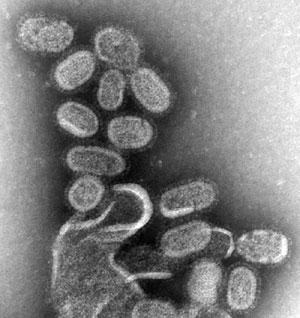Swine flu: 100,000 UK cases a day by August
Sarah Boseley and Severin Carrell
guardian.co.uk, Thursday 2 July 2009 22.02 BST
Article history
More than 100,000 people could be diagnosed with swine flu every day by the end of August, the government said, announcing that the disease can no longer be contained in the UK.
A Commons statement by the health secretary, Andy Burnham, marks a watershed in the spread of the flu. No more schools will be closed, unless forced to by the lack of staff or if the pupils are especially vulnerable. Families and people in contact with those with flu will not be given preventative antiviral drugs.
The new policy of treatment for those with diagnosed illness, rather than containment, has already begun in the hotspots – chiefly London, Birmingham and Scotland.
The change of tactic is the predicted response to the swelling number of people infected. There are now 7,447 diagnosed cases in the UK, but the number is doubling every week. If they continue in this way, said Burnham in his statement, "we could see over 100,000 cases per day by the end of August". He later stressed that the figure "is a projection. It is not a fact. This is how the disease could develop and we don't know."
Those sorts of numbers would put a heavy burden on the NHS, which is already feeling the strain in some areas. The new strategy will help keep those with possible symptoms out of GP surgeries.
People who think they may have flu are now being advised to go online and check their symptoms on the NHS website or call the swine flu information line, on 0800 1 513 513. Anyone still concerned after that should phone their GP, who can provide a diagnosis over the phone. If swine flu is confirmed, they will be issued with an authorisation voucher, which a "flu friend" can take to an antiviral drug collection point, which may be a pharmacy or a health centre.
But health officials in Scotland doubt the virus will spread dramatically across the UK, as it seems to have peaked in Scotland, which saw the first big outbreaks, and the first two deaths in Europe.
The rapid spread of the virus has slowed down in Paisley, which suffered the second largest outbreak, and it has disappeared in Dunoon, where a coachload of football fans were infected. In Glasgow, until recently the worst affected area of the UK, infection rates have stabilised. After infection rates peaked at 111 confirmed cases on 25 June, the rate in Scotland has remained steady at an average of about 60 new cases a day over the last week. There is no evidence that infection rates in Scotland, where the virus first arrived in late April, were doubling.
Dr Harry Burns, Scotland's chief medical officer, said he was "now optimistic that sometime over the next few weeks, the rate of transmission will begin to slow down" [in Scotland].
It was entirely possible, he added, that the outbreaks elsewhere in the UK would also slow down in a matter of weeks.
The fatality rate also appears to be low. In the UK, only three people – all with significant underlying health problems – have died out of 7,447 confirmed cases. Health experts believe more people have caught swine flu but shown no symptoms.
In the United States, the official figures show 27,725 Americans have contracted H1N1, with 127 deaths. The Centres for Disease Control and Prevention, in Atlanta, estimates that a million Americans may have caught swine flu but not been to a doctor, suggesting that fatality rates are as low as 0.012%, Burns said.
The European Centre for Disease Prevention and Control reported on Thursday that of 69,177 cases which had been detected worldwide, only 328 people had died – a fatality rate of 0.47%.
However, Sir Liam Donaldson, the chief medical officer, said that it was not yet possible to work out the death rate from the virus, "given the unreliability of the data", but that it would become clearer in the coming months.
The first batches of vaccine will arrive in August.
Although the UK has ordered enough for the entire population, it will arrive in batches. At-risk groups would get it first, said Donaldson: those especially vulnerable because of diseases which have compromised their immune systems or affect their breathing, such as asthma.
New flu strains cannot be eradicated. They simply become part of the seasonal flu mix. Donaldson said that swine flu could continue to cause extra deaths for five years. "We will need the vaccine in years to come," he said.


